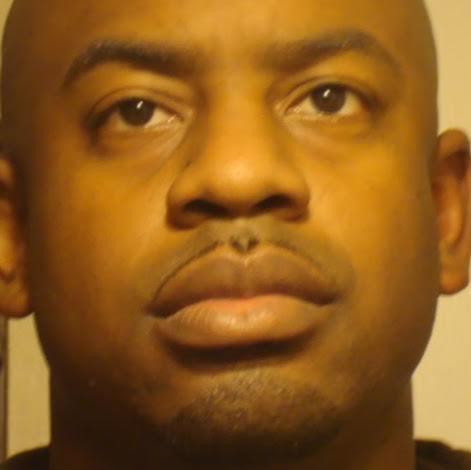Lester Wilson
Deceased
from Mesquite, TX
- Also known as:
-
- Lester W Wilson
- L Wilson
- Wilson Lester
Lester Wilson Phones & Addresses
- Mesquite, TX
- Virginia Beach, VA
- 81 Stanwick Ct, Somerset, NJ 08873 • (732)2496311
- 88 Sturbridge Dr, Piscataway, NJ 08854 • (732)6990409
- Maplewood, NJ
- Fort Worth, TX
Us Patents
-
Digital Signal Processor/Known Good Die Packaging Using Rerouted Existing Package For Test And Burn-In Carriers
view source -
US Patent:6335226, Jan 1, 2002
-
Filed:Feb 9, 2000
-
Appl. No.:09/500507
-
Inventors:Richard W. Arnold - McKinney TX
Lester L. Wilson - Sherman TX
Mahmood A. Siddiqui - Desoto TX
James A. Forster - Barrington RI -
Assignee:Texas Instruments Incorporated - Dallas TX
-
International Classification:H01L 2130
-
US Classification:438123, 438108, 438118, 438456, 438611, 257734, 257737, 257784
-
Abstract:A package for a semiconductor die having a header with a cavity. The cavity includes a floor, sidewalls and a plurality of vertically spaced apart rows along the cavity sidewalls, each row including a plurality of spaced apart bond fingers. An electrically insulating membrane, preferably silicon, is disposed over the floor of the cavity, the membrane including a plurality of bumps, a plurality of peripherally located membrane bond pads and an interconnect from each of the bumps to a membrane bond pad. Bond wires are connected between the membrane bond pads and the bond fingers on the plurality of rows. A semiconductor die is provided having a plurality of bond pads, each bond pad contacting one of the bumps on the membrane. The header includes a plurality of alternating layers of electrically conducting material and electrically insulating material, the bond fingers on the header each being coupled to one of the layers of electrically conducting material. Each layer of electrically conducting material can include a plurality of spaced apart interconnect lines, each line coupled to one of the bond fingers.
-
Stud-Cone Bump For Probe Tips Used In Known Good Die Carriers
view source -
US Patent:6376352, Apr 23, 2002
-
Filed:Nov 1, 1999
-
Appl. No.:09/431730
-
Inventors:Richard W. Arnold - McKinney TX
Weldon Beardain - Denison TX
Lester L. Wilson - Sherman TX
James A. Forster - Barrington RI -
Assignee:Texas Instruments Incorporated - Dallas TX
-
International Classification:H01L 2144
-
US Classification:438612, 438613, 438614, 438650, 22818022
-
Abstract:A method of forming a membrane for use in conjunction with a semiconductor carrier and the membrane which includes an electrically insulating substrate and an interconnect pattern formed on the substrate. A stud is coupled to the interconnect pattern over the substrate by forming a gold ball, preferably by gold ball bonding techniques, and coating a portion of the gold ball with a compliant material, preferably an epoxy resin. The coating is filled with a material having sufficient hardness to be capable of penetrating the oxide film on the contact pads of semiconductor devices. The flakes are preferably silver or silver-based.
-
Digital Signal Processor/Known Good Die Packaging Using Rerouted Existing Package For Test And Burn-In Carriers
view source -
US Patent:6489673, Dec 3, 2002
-
Filed:Jun 15, 2001
-
Appl. No.:09/880870
-
Inventors:Richard W. Arnold - McKinney TX
Lester L. Wilson - Sherman TX
Mahmood A. Siddiqui - Desoto TX
James A. Forster - Barrington RI -
Assignee:Texas Instruments Incorporated - Dallas TX
-
International Classification:H01L 2352
-
US Classification:257692, 257680, 257690, 257693, 257697, 257701, 257737, 257738, 257773, 257784, 257786
-
Abstract:A package for a semiconductor die having a header with a cavity. The cavity includes a floor, sidewalls and a plurality of vertically spaced apart rows along the cavity sidewalls, each row including a plurality of spaced apart bond fingers. An electrically insulating membrane, preferably silicon, is disposed over the floor of the cavity, the membrane including a plurality of bumps, a plurality of peripherally located membrane bond pads and an interconnect from each of the bumps to a membrane bond pad. Bond wires are connected between the membrane bond pads and the bond fingers on the plurality of rows. A semiconductor die is provided having a plurality of bond pads, each bond pad contacting one of the bumps on the membrane. The header includes a plurality of alternating layers of electrically conducting material and electrically insulating material, the bond fingers on the header each being coupled to one of the layers of electrically conducting material. Each layer of electrically conducting material can include a plurality of spaced apart interconnect lines, each line coupled to one of the bond fingers.
-
Semiconductor Test Structure Having A Laser Defined Current Carrying Structure
view source -
US Patent:6553661, Apr 29, 2003
-
Filed:Jan 4, 2001
-
Appl. No.:09/754834
-
Inventors:Richard W. Arnold - McKinney TX
Lester Wilson - Sherman TX
James Forster - Barrington RI -
Assignee:Texas Instruments Incorporated - Dallas TX
-
International Classification:H05K 302
-
US Classification:29847, 29842, 29844, 29853, 324754
-
Abstract:A test structure that is readily and inexpensively configurable to interface with dies having different bond pad configurations is achieved by providing a blank test membrane having a conductive coating or a matrix of conductive lines formed thereon. Once a die bond pad configuration is known, the test membrane can be configured for the die bond pads by using a laser under software control to define connection pads correlating to the die bond pads and also to define interconnecting conductive traces from the connecting pads to contact pads that can be connected to test equipment. In one embodiment, the laser operates to ablate a continuous conductive coating, so as to form conductive pads and traces. In another embodiment, the laser is used to cut various lines in a matrix of conductive lines, so as to define conductive paths from the bond pads to the contact pads for connection to the test equipment.
-
Probe Card With Contact Apparatus And Method Of Manufacture
view source -
US Patent:6636063, Oct 21, 2003
-
Filed:Oct 2, 2001
-
Appl. No.:09/968963
-
Inventors:Richard W. Arnold - McKinney TX
James Forster - Barrington RI
Reynaldo M. Rincon - Richardson TX
Lester Wilson - Sherman TX -
Assignee:Texas Instruments Incorporated - Dallas TX
-
International Classification:G01R 3102
-
US Classification:324762, 3241581
-
Abstract:A probe card having reliable âmicro probeâ contacts which include a base and an angled probe tip fabricated as a single unit from a thin sheet of a conductive metal having high tensile and yield strength, and coated with a noble metal. The micro probes are secured into precisely dimensioned, and positioned locations on the card, and are electrically connected to traces on the card. Design of the micro probes includes not only the base and probe tip, but also locking features, a stand-off to prevent over compression, and a necked down stem feature for release from the support strap used in transporting and plating during the manufacturing processes.
-
Method Of Testing A Semiconductor Chip
view source -
US Patent:6720574, Apr 13, 2004
-
Filed:Nov 8, 2001
-
Appl. No.:09/986341
-
Inventors:Richard W. Arnold - McKinney TX
Weldon Beardain - Denison TX
Daniel W. Prevedel - Fort Collins CO
Donald E. Riley - Midland TX
Lester L. Wilson - Sherman TX -
Assignee:Texas Instruments Incorporated - Dallas TX
-
International Classification:H01L 2358
-
US Classification:257 48, 438 14, 438 15, 438 16, 438 17, 438 18
-
Abstract:An apparatus for testing a semiconductor die and the method wherein there is provided a package having a cavity therein with a plurality of terminals in the package disposed at the periphery of the cavity. A semiconductor die to be tested and having a plurality of bond pads thereon is disposed in the cavity and an interconnecting layer having electrically conductive paths thereon is also disposed in the cavity, each of the paths having first and second spaced apart regions thereon, the first region of each path being aligned with and contacting a bond pad. An interconnection is provided between the second spaced apart region of each of the paths and one of the plurality of terminals. The second spaced apart region of each of the paths is preferably a bump aligned with and contacting one of the plurality of terminals. A compliant layer is preferably disposed over the interconnecting layer and provides a force causing engagement of at least the first spaced apart regions and the bond pads. The first region is preferably a compliant bump probe tip having a first predetermined height above the layer and includes a standoff on the layer having a second predetermined height above the layer less than the first height.
-
High Density Probe Card Apparatus And Method Of Manufacture
view source -
US Patent:6720780, Apr 13, 2004
-
Filed:Aug 2, 2001
-
Appl. No.:09/921169
-
Inventors:Reynaldo M. Rincon - Richardson TX
Jerry Broz - Longmont CO
Lester Wilson - Sherman TX
Richard W. Arnold - McKinney TX -
Assignee:Texas Instruments Incorporated - Dallas TX
-
International Classification:G01R 3102
-
US Classification:324754
-
Abstract:A high density probe card contact apparatus including a support block fitted into an opening in a probe card, and holding a plurality of fine tipped needles extending inward and below an opening in the center of the block. The needle tips are a noble metal integrally connected with a less costly conductive metal which forms the more widely spaced fingers of the needles, and which terminate in contacts to the probe card. Laser etching defines the fine needle pattern in a thin sheet of the two-metal composition which is secured to a polymeric film. The contact apparatus is assembled by positioning one or more sections of the polymer with needles on the support film.
-
Stud-Cone Bump For Probe Tips Used In Known Good Die Carriers
view source -
US Patent:7122895, Oct 17, 2006
-
Filed:May 1, 2001
-
Appl. No.:09/845344
-
Inventors:Richard W. Arnold - McKinney TX, US
Weldon Beardain - Denison TX, US
Lester L. Wilson - Sherman TX, US
James A. Forster - Barrington RI, US -
Assignee:Texas Instruments Incorporated - Dallas TX
-
International Classification:H01L 23/52
H01L 23/48 -
US Classification:257738, 257778, 257E2306
-
Abstract:A method of forming a membrane for use in conjunction with a semiconductor carrier and the membrane which includes an electrically insulating substrate and an interconnect pattern formed on the substrate. A stud is coupled to the interconnect pattern over the substrate by forming a gold ball, preferably by gold ball bonding techniques, and coating a portion of the gold ball with a compliant material, preferably an epoxy resin. The coating is filled with a material having sufficient hardness to be capable of penetrating the oxide film on the contact pads of semiconductor devices. The flakes are preferably silver or silver-based.
Isbn (Books And Publications)

Instrumental Measurement of Sensory Quality Attributes in Foods
view sourceAuthor
Lester Wilson
ISBN #
0813805112

Lawyers & Attorneys
Name / Title
Company / Classification
Phones & Addresses
Manager
Market Measures Inc
Men's and Boys' Clothing and Accessory Stores
Men's and Boys' Clothing and Accessory Stores
354 Eisenhower Parkway, Plaza I, Livingston, NJ 07039
Manager
Wilson, Lester
Legal Services
Legal Services
35 Olympia St, Clifton, NJ 07011
Principal
Gfk Market Measures
Business Services at Non-Commercial Site
Business Services at Non-Commercial Site
14 Jocelyn Pl, Pompton Plains, NJ 07444
Incorporator
HAL, INC
Incorporator
DEL, INC
Vice President
Conoco Inc
Wikipedia References

Lester Wilson
About:
Born:
1942
Died:1993
Work:
Position:
Musical theatre actor
Education:
Studied at:
Juilliard School
Area of science:Choreography
Specialty:Choreographer • Dancer
Skills & Activities:
Award:
Emmy Award
Resumes

Security Manager
view sourceLocation:
1 Washington St, Taunton, MA 02780
Industry:
Security And Investigations
Work:
Fema
Security Manager
United States Marine Corps Aug 2012 - Mar 2015
Staff Noncommison Officer In Charge Combine Arms Staff Trainer
United States Marine Corps Aug 2012 - Mar 2015
Retired
United States Marine Corps Jan 2008 - Jul 2012
Battalion Fires Liaison Chief
United States Marine Corps May 2000 - Oct 2001
G-3 Operation Cheif
Security Manager
United States Marine Corps Aug 2012 - Mar 2015
Staff Noncommison Officer In Charge Combine Arms Staff Trainer
United States Marine Corps Aug 2012 - Mar 2015
Retired
United States Marine Corps Jan 2008 - Jul 2012
Battalion Fires Liaison Chief
United States Marine Corps May 2000 - Oct 2001
G-3 Operation Cheif
Education:
Tulane University 2017 - 2018
Masters, Homeland Security American Military University 2012 - 2015
Bachelor of Applied Science, Bachelors, Bachelor of Arts, Homeland Security
Masters, Homeland Security American Military University 2012 - 2015
Bachelor of Applied Science, Bachelors, Bachelor of Arts, Homeland Security
Skills:
Leadership
Security Clearance
Homeland Security
Security Operations
Leadership Development
Military Operations
Operational Planning
Training
Command
Weapons
Military Experience
Military
Personnel Management
Problem Solving
Law Enforcement
Combat
Self Defense
Motivational Speaking
Team Management
Security Management
Budget Management
Action Plan Creation
Decision Making
Determination
Flexible Schedule
Drug Testing
Sexuality Education
Industrial Safety
Marine Corps
Military Training
Counterinsurgency
Force Protection
Military Logistics
Top Secret
Tactics
Special Operations
Dod
National Security
Counterterrorism
Defense
Afghanistan
Intelligence Analysis
Army
Physical Security
Navy
Combat Lifesaver
Active Dod Secret Clearance
Weapons and Tactics Instruction
Weapons Handling
Personal Development
Administration
Crisis Intervention
Crisis Management
Drug Interactions
Family Services
Security Clearance
Homeland Security
Security Operations
Leadership Development
Military Operations
Operational Planning
Training
Command
Weapons
Military Experience
Military
Personnel Management
Problem Solving
Law Enforcement
Combat
Self Defense
Motivational Speaking
Team Management
Security Management
Budget Management
Action Plan Creation
Decision Making
Determination
Flexible Schedule
Drug Testing
Sexuality Education
Industrial Safety
Marine Corps
Military Training
Counterinsurgency
Force Protection
Military Logistics
Top Secret
Tactics
Special Operations
Dod
National Security
Counterterrorism
Defense
Afghanistan
Intelligence Analysis
Army
Physical Security
Navy
Combat Lifesaver
Active Dod Secret Clearance
Weapons and Tactics Instruction
Weapons Handling
Personal Development
Administration
Crisis Intervention
Crisis Management
Drug Interactions
Family Services
Interests:
Politics
Children
Education
Disaster and Humanitarian Relief
Children
Education
Disaster and Humanitarian Relief

Lester Wilson
view source
Lester Wilson
view sourceLocation:
United States
Classmates

Lester Wilson
view sourceSchools:
Goshen Union High School Damascus OH 1945-1949
Community:
Barbara Stanley, Royce Miller

Lester Wilson
view sourceSchools:
St. Tarcissus School Chicago IL 1978-1982
Community:
Gerald Witalec, Joel Lewon, Terese Barth, Robert Davey, Yvonne Remillard, Gary Pahl

Lester Wilson
view sourceSchools:
Pinkston High School Dallas TX 1985-1989
Community:
Zol Singleton, Kelvin Lee, Doris Lewis, Debra Davis

Lester Wilson
view sourceSchools:
Wilson Technical School Dix Hills NY 1987-1989
Community:
Patricia Mcardle

Lester Wilson
view sourceSchools:
Blaine High School Blaine KY 1964-1968
Community:
Linda Skaggs, Ella Ison, Loretta Chaffin, Larry White, Judith Sturgill, Pat Salyer, Kathy Nichols, Douglas Savage, Glenda Rigsby, Corliss Blevins, Ellen Templeman, Diana Fyffe

Lester Wilson
view sourceSchools:
Dayton Street Elementary School Newark NJ 1952-1960, Essex County Vocational and Technical High School. Newark NJ 1961-1965
Community:
Marianne Serritella, Priscilla Butler, Sondra Wilson, Barbara Iacoves, Richard Little, Elvira Romano, Bruce Leonard, Theresa Giordano, Dorothy Chapko, Louis Winter, Linda Denton, Grace Hudson

Lester Wilson
view sourceSchools:
Marcus Garvey Elementary School Newark NJ 1976-1980
Community:
Daryl Johnson, Denise Sowell, Jenise Grice, Michael Smith

Lester Wilson
view source
Lester Wilson
view source
Lester Wilson
view source
Lester Sal Wilson
view source
Lester Wackie Wilson
view source
Lester OrKilla Wilson
view source
Lester A Wilson
view source
Lester Visionfromokc Wilson
view sourceYoutube
Myspace
Googleplus

Lester Wilson
Education:
Temple University

Lester Wilson

Lester Wilson

Lester Wilson

Lester Wilson

Lester Wilson

Lester Wilson

Lester Wilson
Flickr
Plaxo

Dr Lester Senter Wilson
view sourceGet Report for Lester Wilson from Mesquite, TXDeceased













